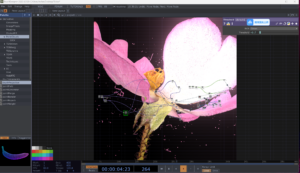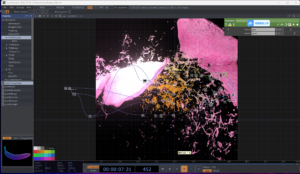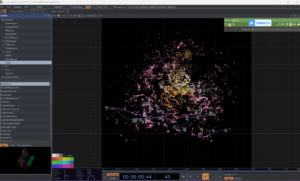I used Noise to generate irregular shapes, allowing the flower to have an organic, natural boundary as it dissipates, rather than shrinking or disappearing abruptly. Compose is connected to Feedback, creating a layered effect that gives continuity to the flower’s fading process, as if leaving behind dust particles suspended in space.

Threshold serves as the main controller. I used two different Thresholds to process the image: one controls brightness, while the other determines the visibility range of the particles, making the dissipation process more refined. In the code section, I used op(‘constant1’).par.value1 – op(‘constant1’).par.value0 to compute a positive and negative variation, allowing the particles to dissipate progressively over time rather than following a linear transformation. During parameter adjustments, I discovered that when Threshold is combined with Feedback, the edges of the flower produce a ripple-like effect, as if it is gradually disintegrating, resembling dust scattering in the wind.

By continuously adjusting the Noise amplitude and speed, I aimed to create a more layered dissipation effect rather than an instant disappearance, making it feel more like a slow dissolution rather than fragmentation. The current dissipation effect already exhibits a certain degree of natural behavior, but some areas still feel too linear. In the future, I may introduce Flow Noise or Shaders to make the effect more organic.


